12 Best Garden Structures for Cooling Down Your Plants
Keeping your garden cool during hot weather is essential for maintaining healthy plants. Whether you have delicate flowers, vegetables, or shrubs, providing shade and reducing heat stress can make a significant difference in their growth. From simple shade cloths to decorative pergolas, various structures can protect your plants from intense sun exposure. These garden solutions not only offer cooling benefits but also enhance the overall beauty and functionality of your outdoor space.
This post may contain affiliate links, which helps keep this content free. Please read our disclosure for more info.
Pergolas
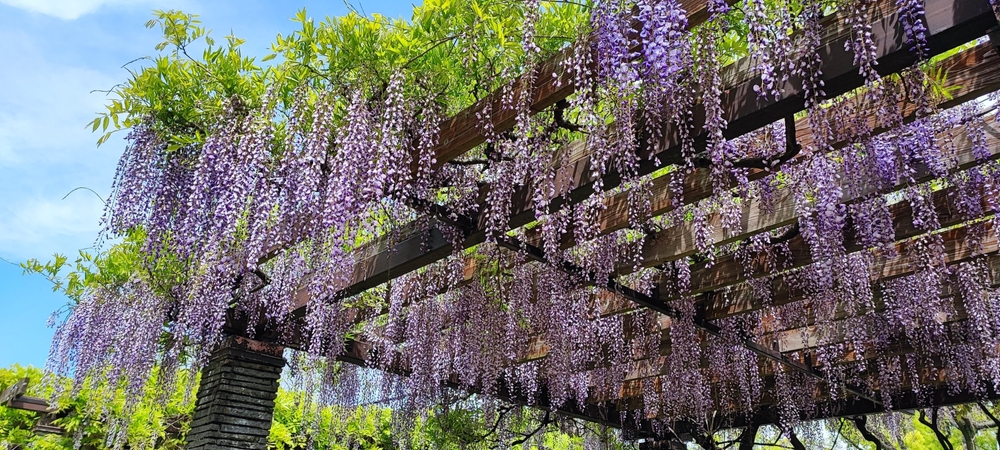
Pergolas are excellent structures for providing partial shade to your garden. These open-roofed structures are typically covered with vines or climbing plants, which help create a natural canopy. By placing a pergola over garden beds or seating areas, you can reduce heat stress on delicate plants by blocking out direct sunlight while still allowing for airflow. This makes pergolas a practical and aesthetically pleasing choice for cooling down your garden.
Additionally, pergolas allow for the growth of climbing plants like grapes or ivy, which can offer even more shade as they mature. These plants also help lower the surrounding temperature by releasing moisture into the air, providing a natural cooling effect.
Shade Sails
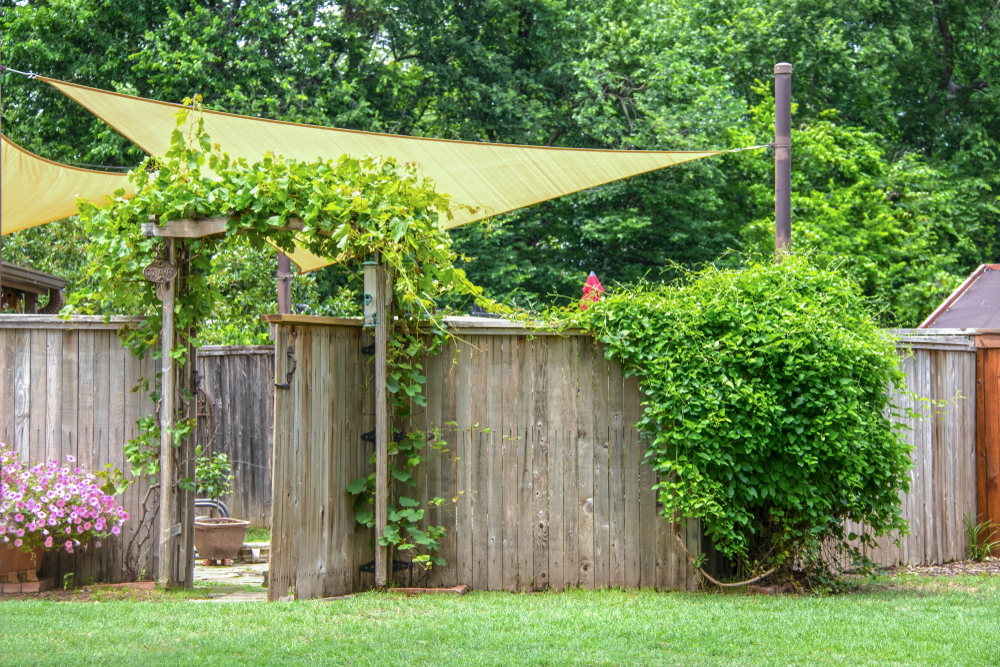
Shade sails are a modern solution for protecting plants from harsh sunlight. These fabric structures are stretched over a frame to create shaded areas, and they come in various shapes and sizes to suit any garden layout. Shade sails are highly effective at blocking UV rays while still allowing rain and wind to pass through, ensuring your plants receive some air circulation.
The flexibility of shade sails allows you to position them precisely where you need shade the most, such as over vegetable beds or delicate flowers. They can also be adjusted as needed to follow the sun’s path, offering dynamic shade protection throughout the day.
Arbors
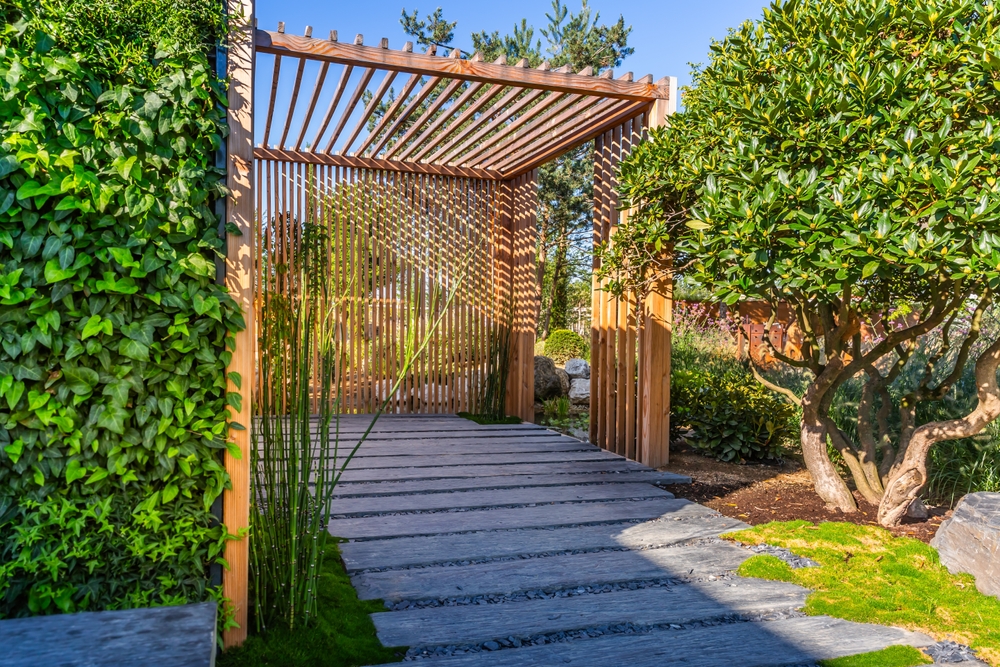
Arbors are another great garden structure that provides shade while adding a decorative element to your outdoor space. These structures are typically placed at the entrance to a garden or along pathways, offering support for climbing plants. By growing vines like roses, clematis, or wisteria on an arbor, you create a beautiful canopy that shields plants underneath from direct sunlight.
Arbors not only provide shade but also contribute to garden aesthetics. The added foliage and flowers from climbing plants help cool the air around the garden, reducing heat and making the space more comfortable for both plants and people.
Trellises
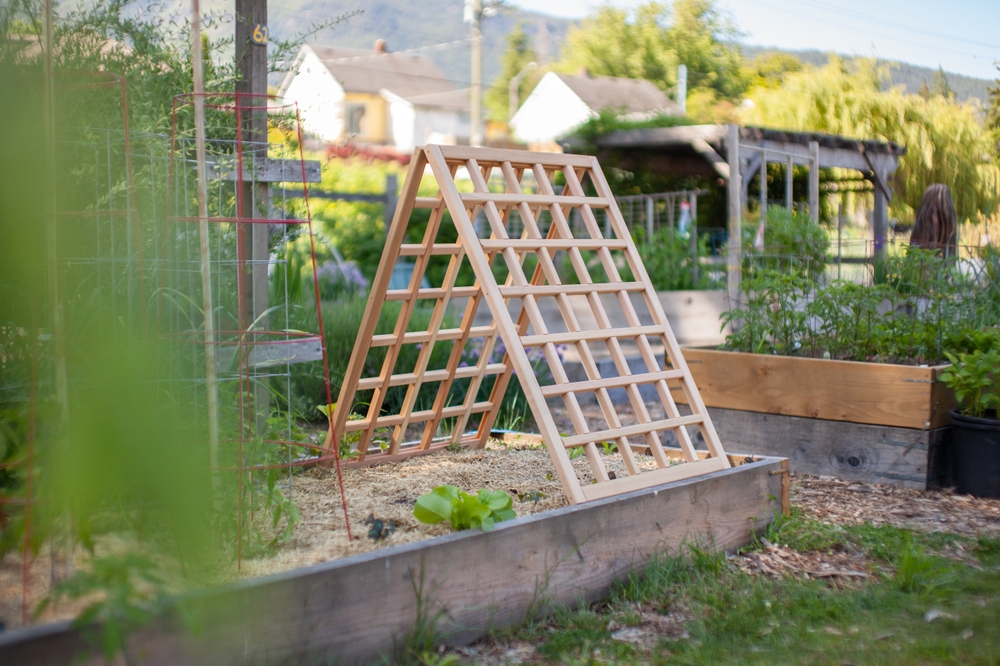
Trellises are a simple and effective way to cool down your plants by providing vertical support for climbing plants. These structures allow for the growth of vine-like plants such as beans, peas, and flowering climbers, which can offer much-needed shade. As the plants grow up the trellis, they form a dense, green layer that blocks out direct sunlight, cooling the soil and the surrounding area.
Trellises can be placed next to plants that need extra protection from the sun, helping to reduce heat stress and prevent wilting. The increased airflow around the plants also ensures they stay healthy and can better withstand the heat.
Greenhouses with Shade Netting
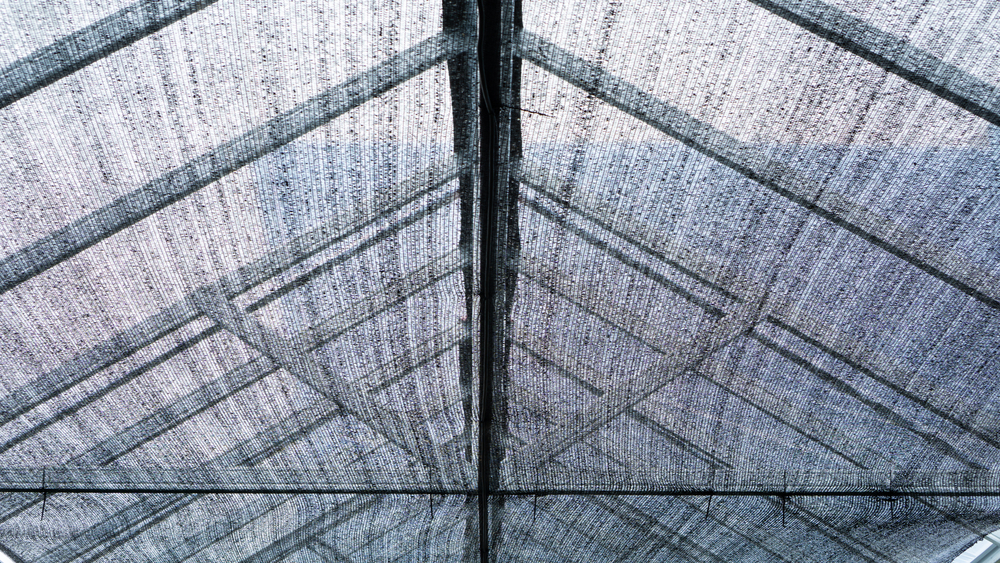
Greenhouses provide a controlled environment for plants, which is particularly useful in hot climates. When combined with shade netting, greenhouses can help cool down plants by diffusing the sunlight. The netting filters the light, reducing its intensity and preventing plants from overheating. This is especially beneficial for young or tender plants that cannot handle direct sunlight for long periods.
Shade netting comes in different percentages of coverage, allowing you to choose the level of protection your plants need. By using this combination, you can extend the growing season while keeping your plants safe from the harsh sun.
Shade Trees

Strategically placing shade trees in your garden is one of the most effective ways to cool down your plants. Trees like oaks, maples, or willows provide natural shade that can shield smaller plants from the sun’s heat. Their large canopy not only blocks direct sunlight but also cools the air through the process of transpiration, where moisture is released through the leaves.
Planting trees on the western side of your garden can be especially beneficial, as they block the afternoon sun, which is the most intense. Over time, these trees will grow and continue to provide shade, reducing the overall temperature of your garden and preventing heat stress.
Shade Cloth
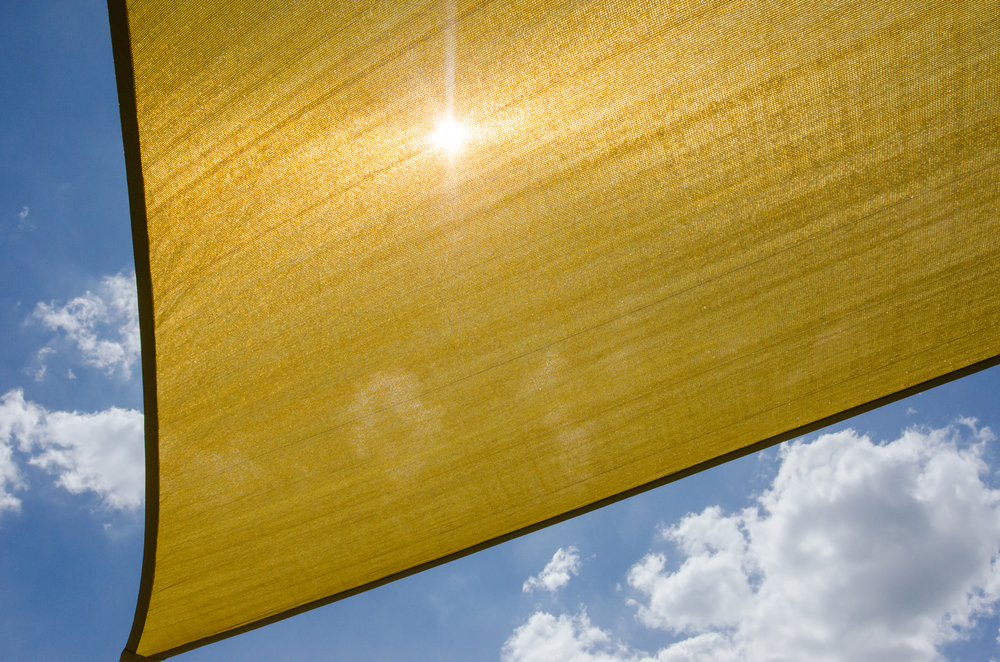
Shade cloth is a versatile and practical option for cooling down your plants. This material is available in various densities, allowing you to choose how much sunlight to filter out. By covering your garden beds or hanging it above sensitive plants, you can significantly reduce the temperature and protect your plants from sunburn and dehydration.
The best part about shade cloth is its flexibility. You can install it as a temporary solution during hot weather or make it a permanent feature in your garden design. It is also lightweight and easy to adjust as your garden grows and needs change.
Gazebos
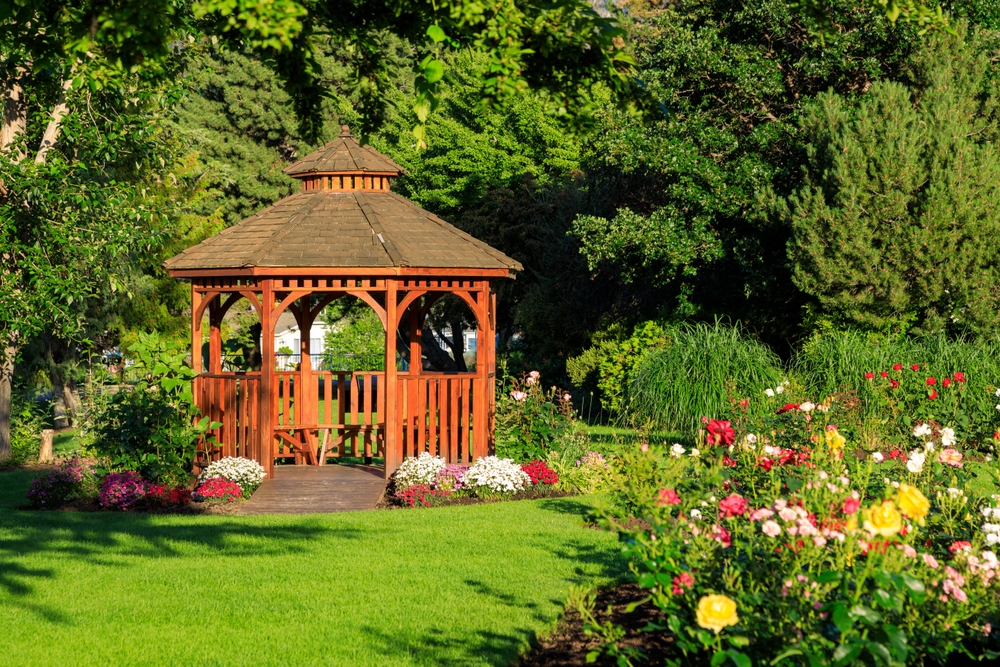
Gazebos are not only great for providing shade for people, but they can also offer protection for your plants. These structures are typically made with solid roofs and open sides, making them perfect for creating shaded areas over garden beds. By positioning a gazebo over delicate plants or seating areas, you reduce the risk of heat stress while also providing a place to relax during warm weather.
Gazebos also help with temperature regulation by blocking out direct sunlight and providing a cooler environment. You can add climbing plants or hanging baskets to further enhance the cooling effect and create a lush, shaded retreat in your garden.
Pergola with Retractable Roof
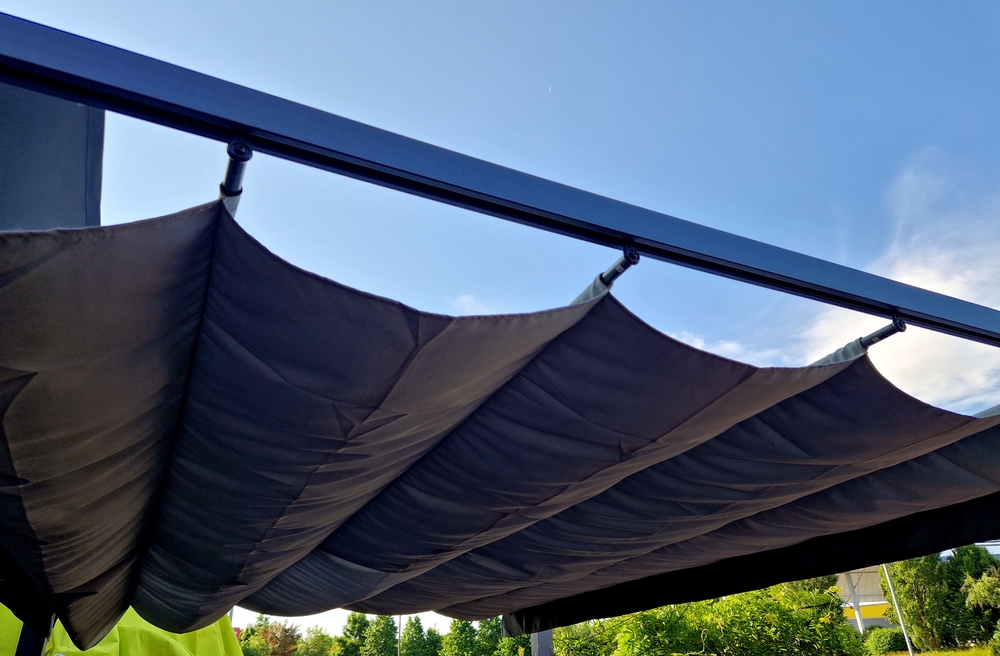
A pergola with a retractable roof combines the best of both worlds, allowing you to adjust the amount of shade based on the weather. When the sun is at its hottest, you can extend the roof to provide more shade, and when it’s cooler, you can retract it to let in more sunlight. This flexibility makes it an excellent choice for gardeners who want to control the amount of sunlight their plants receive.
With the retractable feature, you can easily adjust the structure as needed, ensuring that your plants get optimal protection without sacrificing airflow. This also prevents your garden from becoming too hot or too cold, offering a balanced environment for healthy plant growth.
Plant Covers
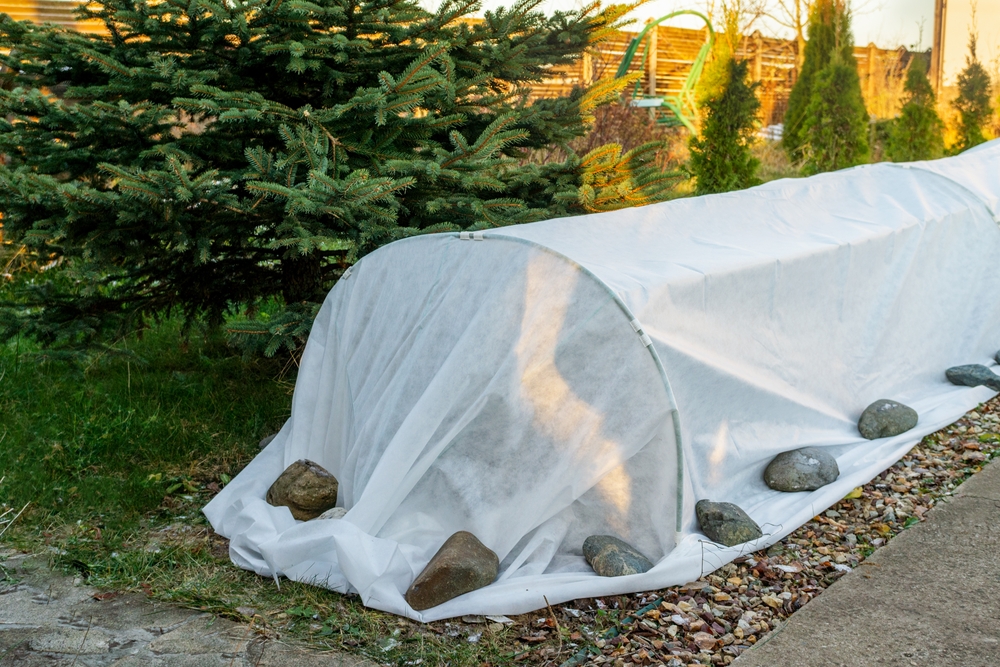
For smaller plants or seedlings that are particularly vulnerable to heat stress, plant covers are a simple and effective solution. These covers are usually made from lightweight fabric or mesh and can be draped over individual plants or rows. They protect plants from intense sunlight while still allowing for proper airflow and moisture retention.
Plant covers can be used temporarily during the hottest parts of the day or left on overnight for added protection. They are particularly useful for delicate plants like lettuce, spinach, or young seedlings that need a little extra help to survive in hot conditions.
Cold Frames
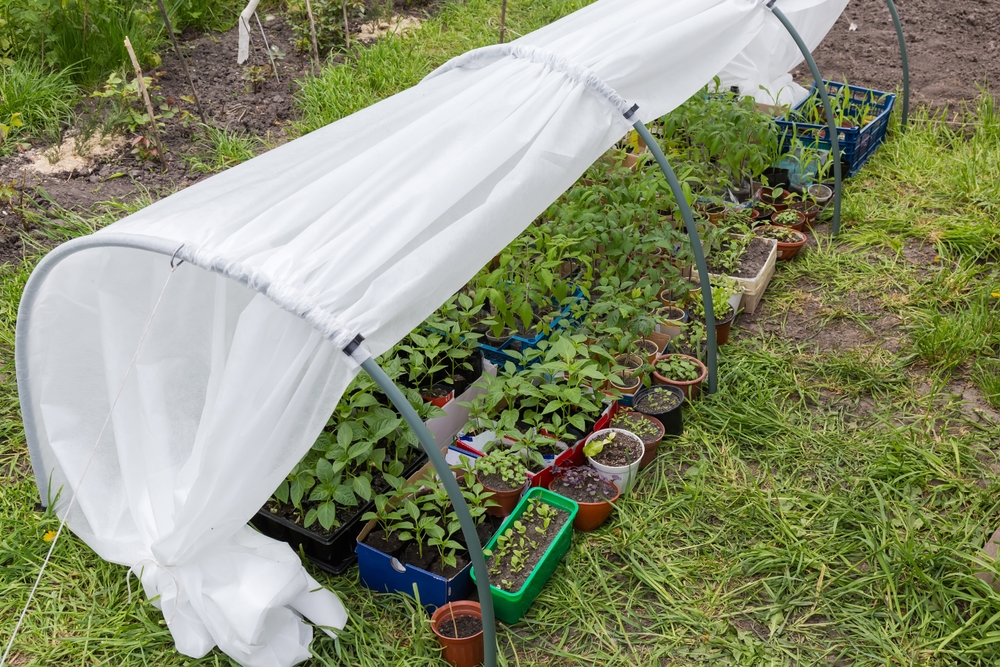
Cold frames are low, transparent structures that act like mini-greenhouses. They are typically placed over garden beds to provide warmth during cooler months, but they can also help keep plants cool in hot weather. By using ventilated cold frames, you can create a shaded, cooler environment for your plants during the summer months.
Cold frames are ideal for plants that need some extra protection from the midday sun. They help regulate temperature by blocking direct sunlight while maintaining a steady airflow, ensuring that plants do not become overheated.
Living Walls
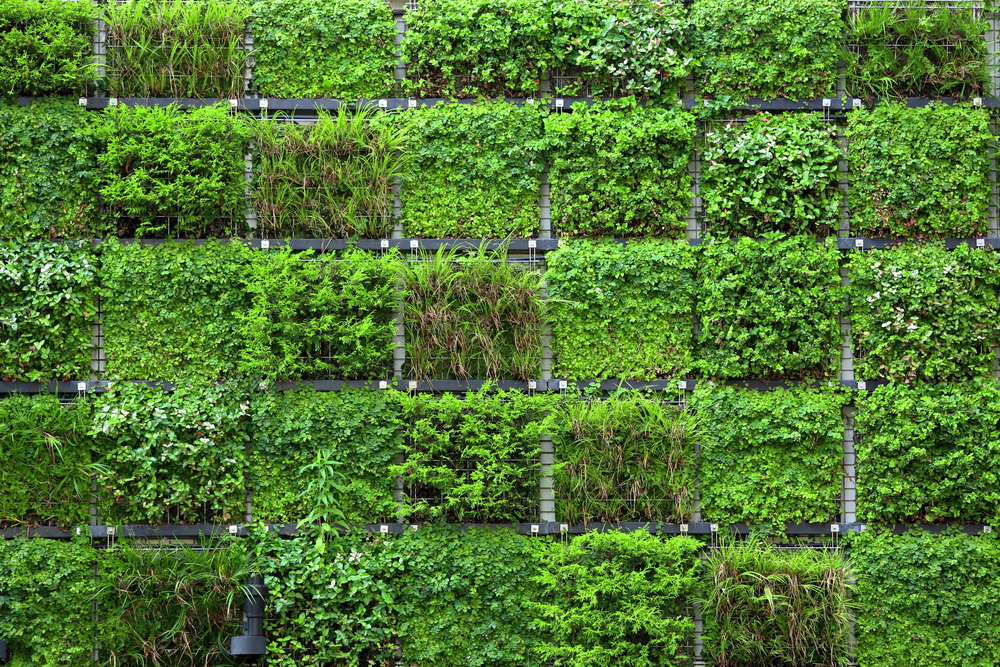
Living walls, also known as green walls, are vertical structures covered with plants that can provide shade and cool the surrounding air. These walls can be made with a variety of climbing plants, shrubs, or even herbs, which help insulate the space by blocking out sunlight. They act as natural air conditioners, releasing moisture and cooling the air around them.
Placing a living wall along the sunniest side of your garden helps protect plants from heat stress while creating a stunning visual element. Living walls can be particularly effective for small gardens where ground space is limited.
This article originally appeared on Avocadu.
